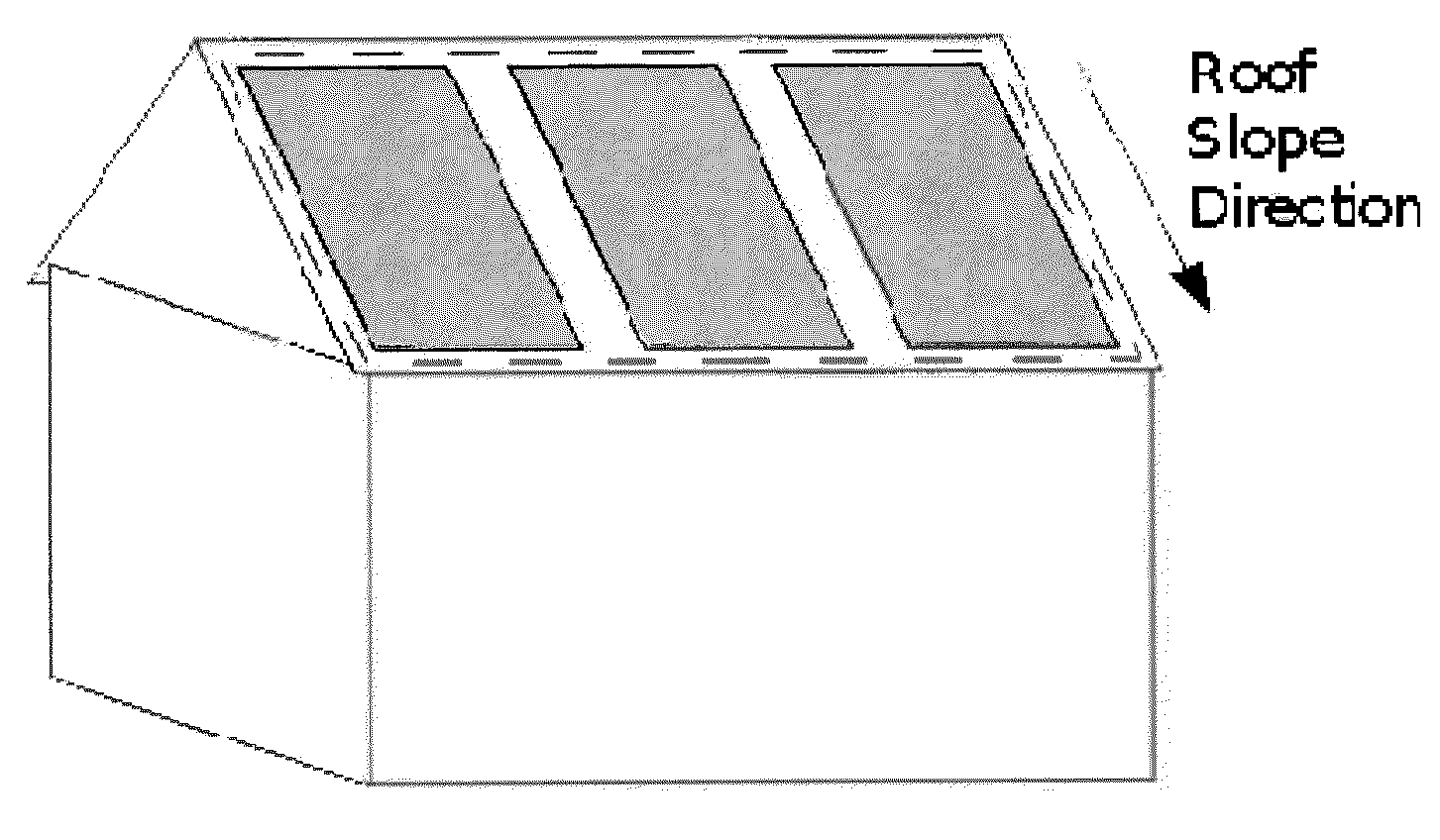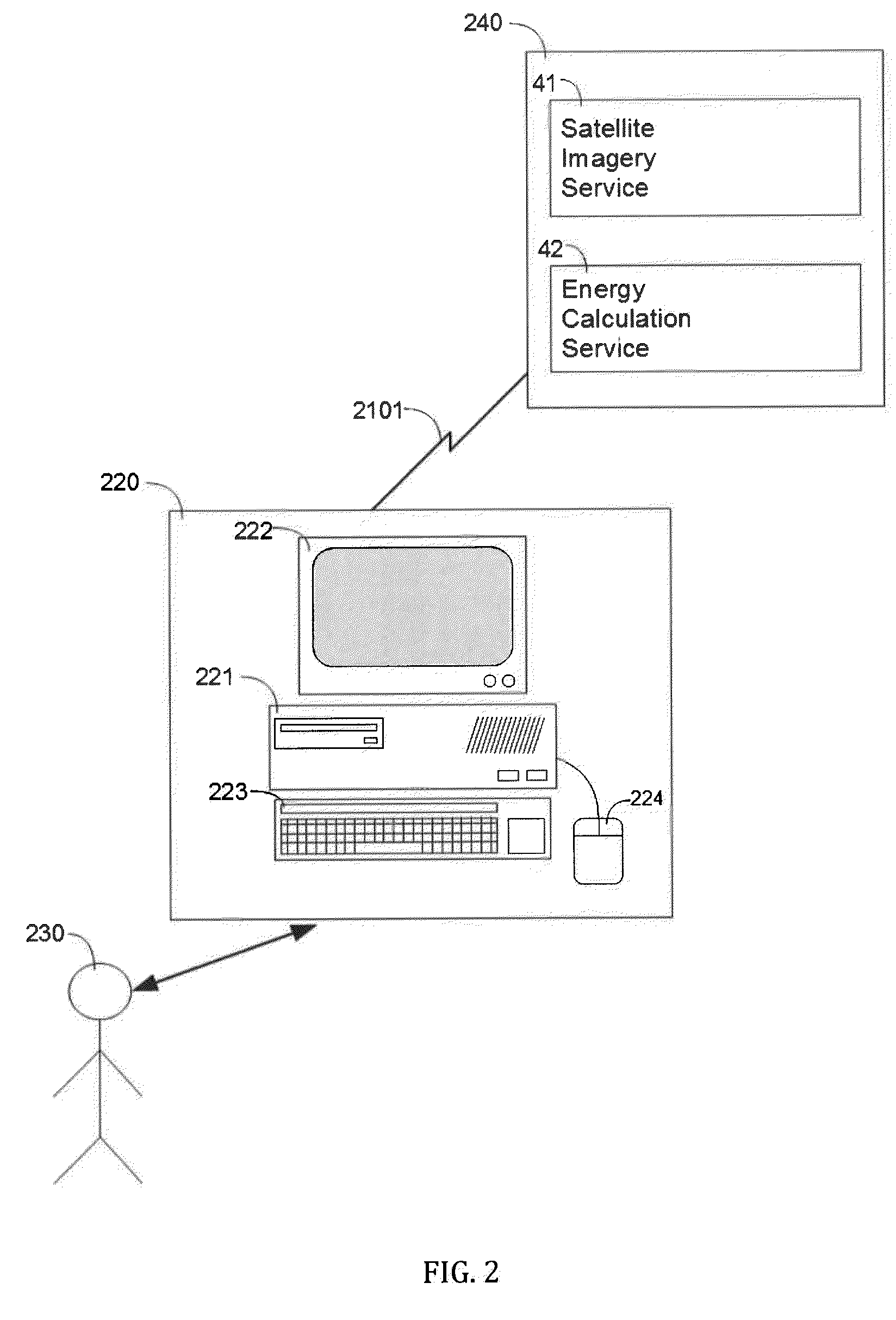System and Method for Optimized Automated Layout of Solar Panels
a solar panel and automated layout technology, applied in photovoltaic supports, sustainable buildings, instruments, etc., can solve the problems of low cost of solar panel production, crude cad tools, and high cost of grid power, and achieve convenient and accurate layout, the effect of facilitating the optimal layout of the ground
- Summary
- Abstract
- Description
- Claims
- Application Information
AI Technical Summary
Benefits of technology
Problems solved by technology
Method used
Image
Examples
Embodiment Construction
[0048]Illustrative and alternative embodiments of the invention will be discussed in detail, as follows, with reference to FIGS. 1-33 provided with this application. The embodiments are provided to illustrate aspects of the invention, but the invention is not limited by any embodiment. The scope of the invention encompasses numerous alternatives, modifications, and equivalents.
[0049]Numerous specific details are set forth in the following description in order to provide a thorough understanding of the invention. However, the invention may be practiced according to the claims without some or all of these specific details. For the purpose of clarity, technical material that is known in the technical fields related to the invention has not been described in detail so that the invention is not unnecessarily obscured.
[0050]The description first discusses the hardware and software context in which the invention can be embodied. This is followed by an overview of the major components of th...
PUM
 Login to View More
Login to View More Abstract
Description
Claims
Application Information
 Login to View More
Login to View More - R&D
- Intellectual Property
- Life Sciences
- Materials
- Tech Scout
- Unparalleled Data Quality
- Higher Quality Content
- 60% Fewer Hallucinations
Browse by: Latest US Patents, China's latest patents, Technical Efficacy Thesaurus, Application Domain, Technology Topic, Popular Technical Reports.
© 2025 PatSnap. All rights reserved.Legal|Privacy policy|Modern Slavery Act Transparency Statement|Sitemap|About US| Contact US: help@patsnap.com



